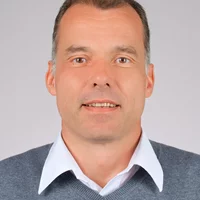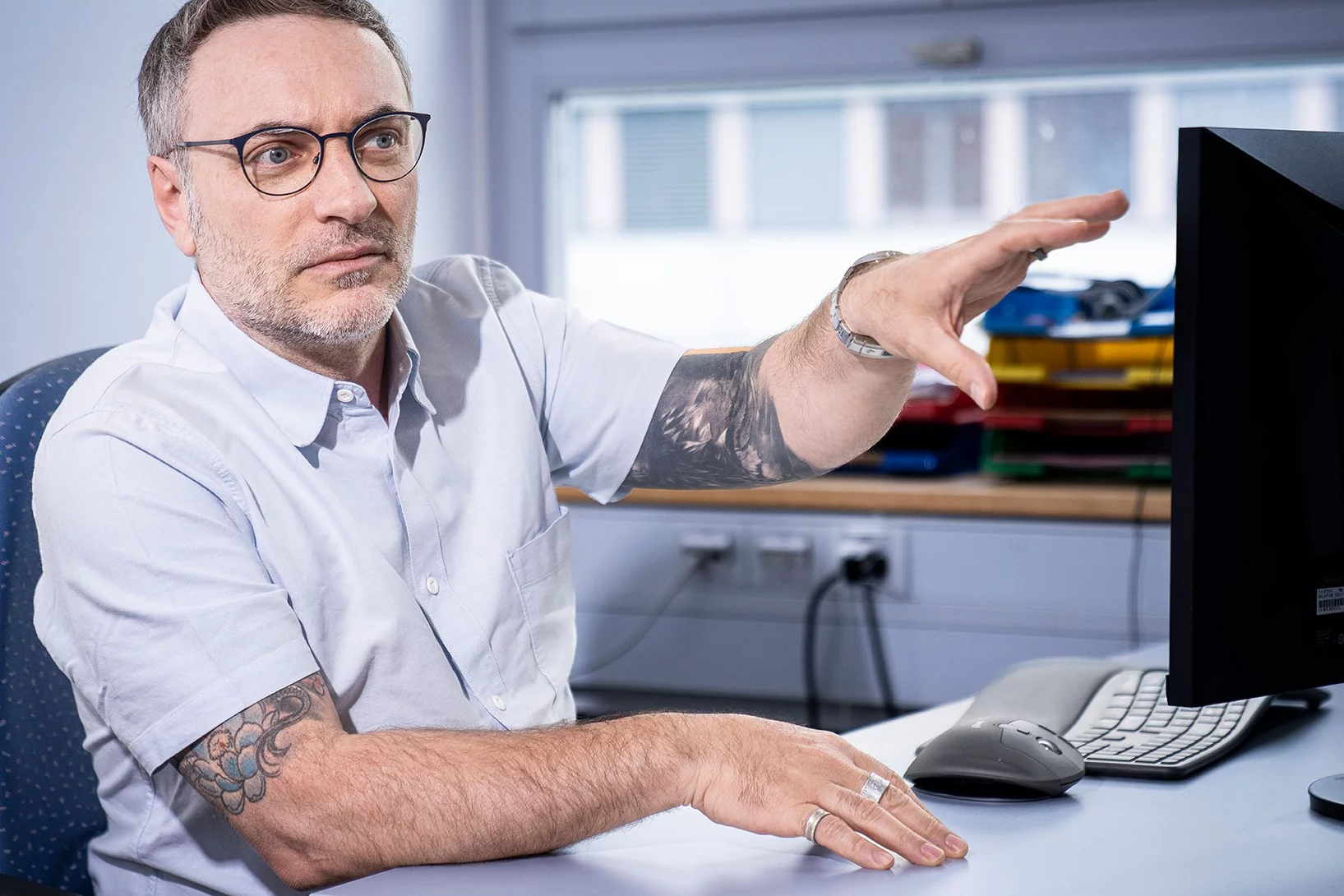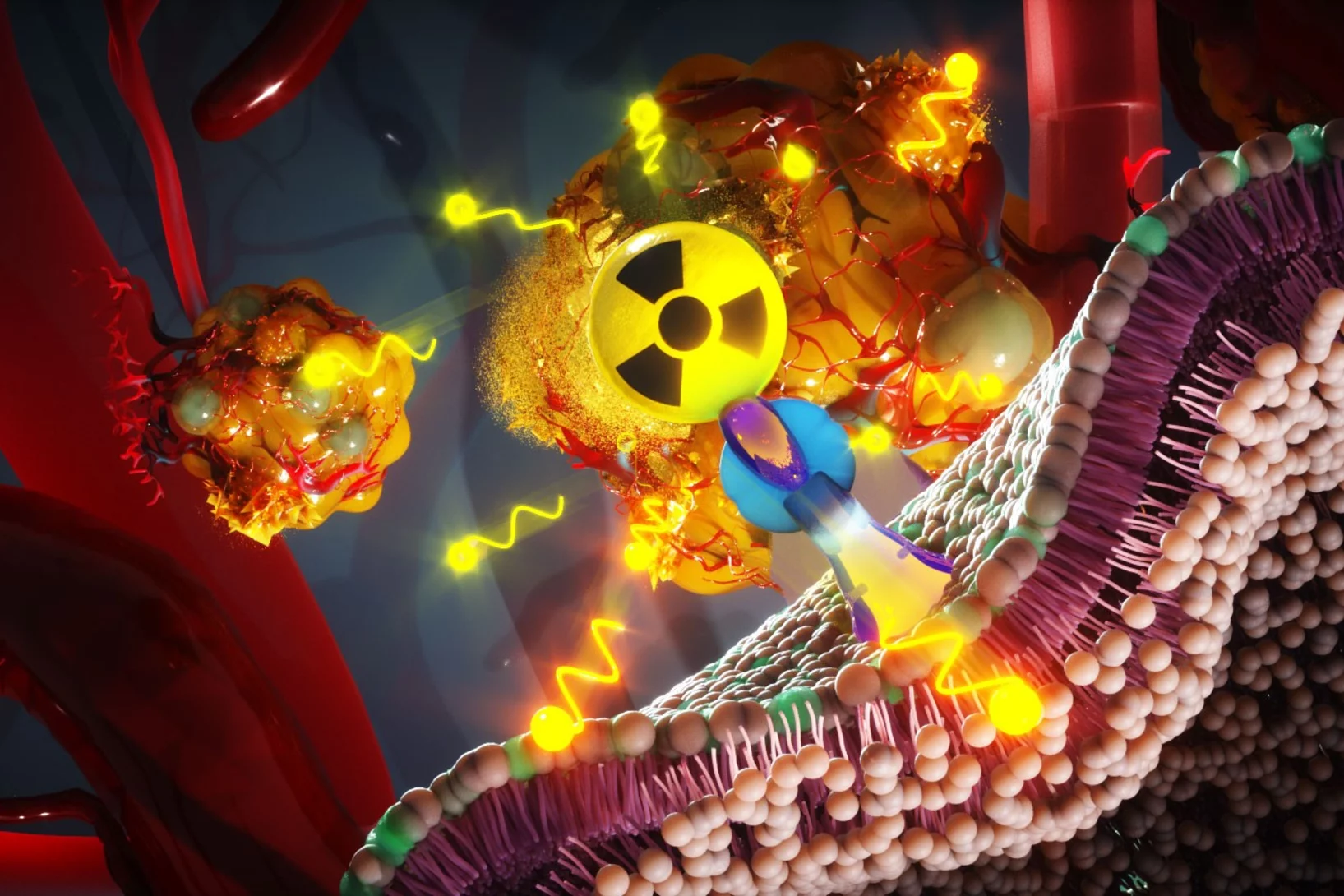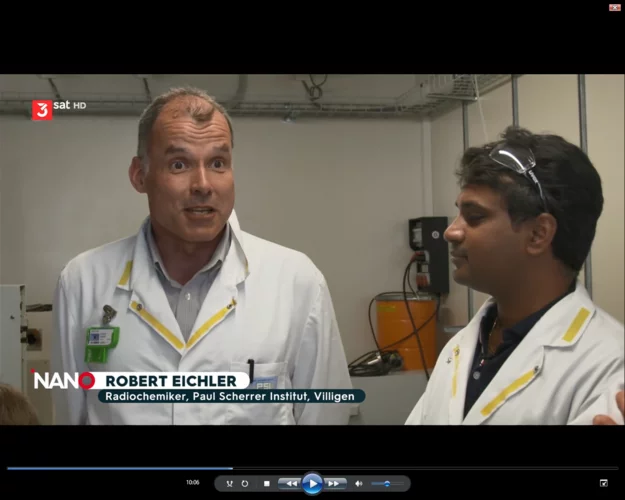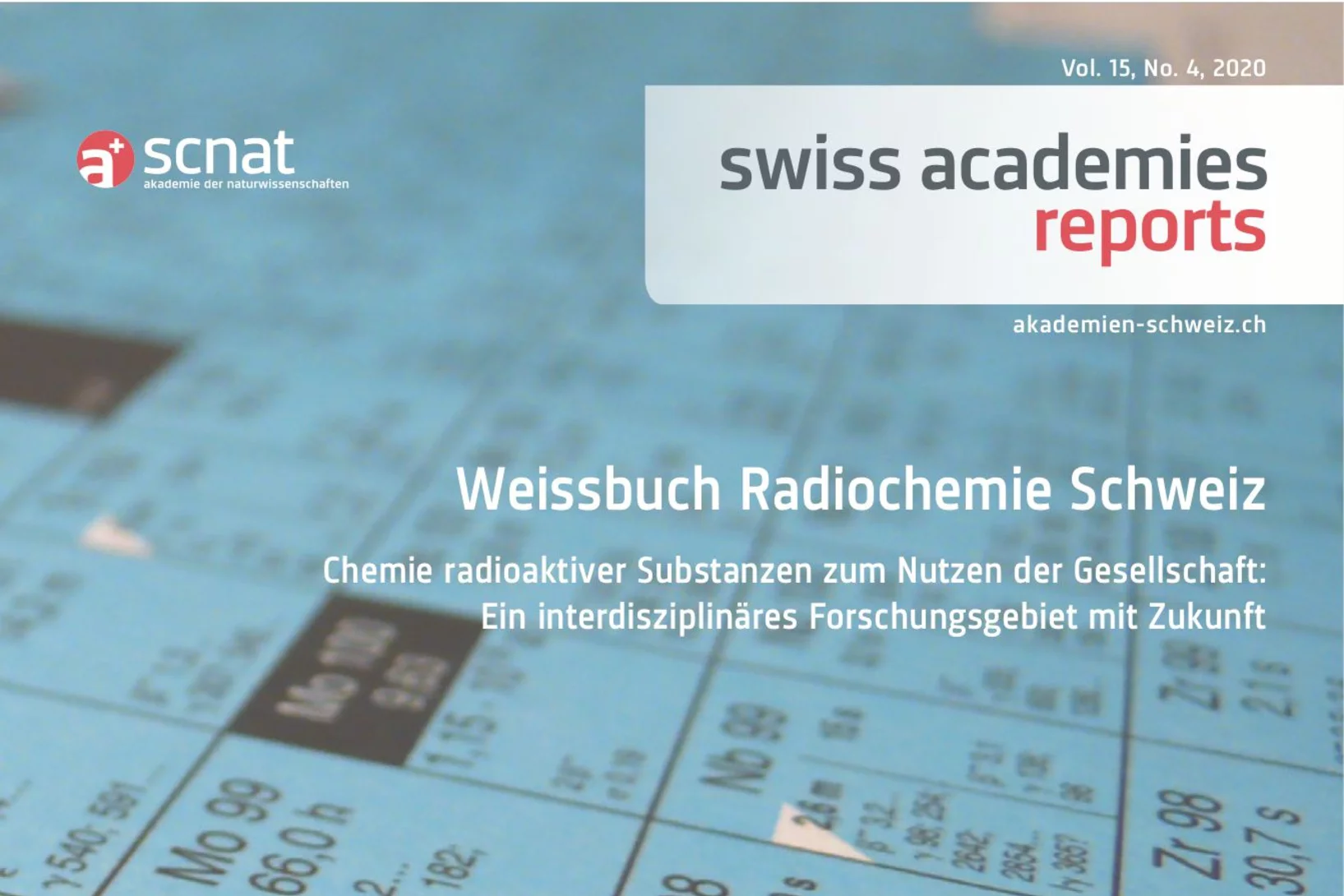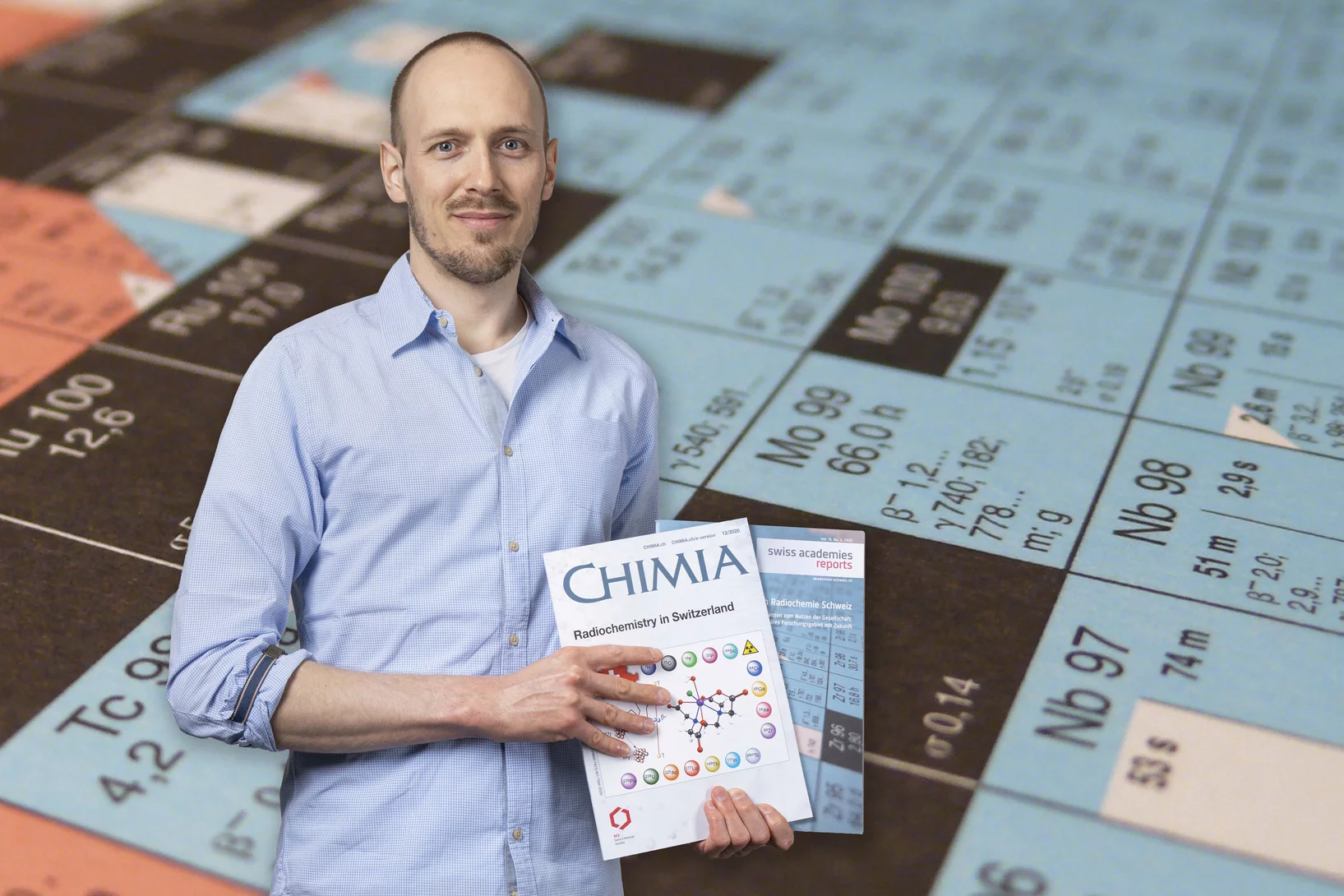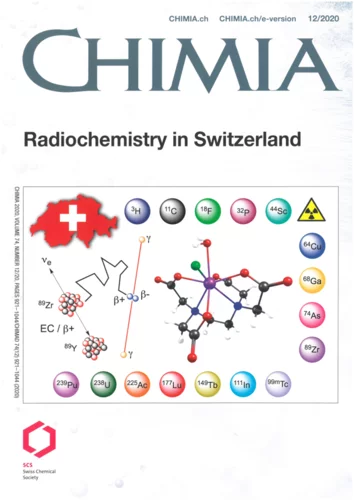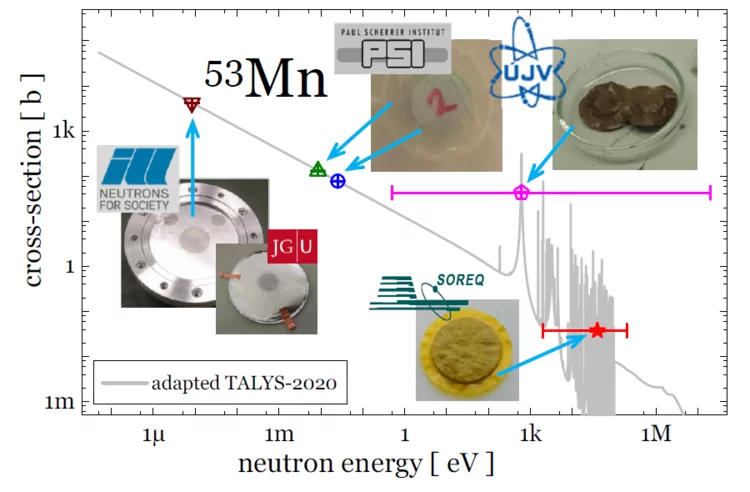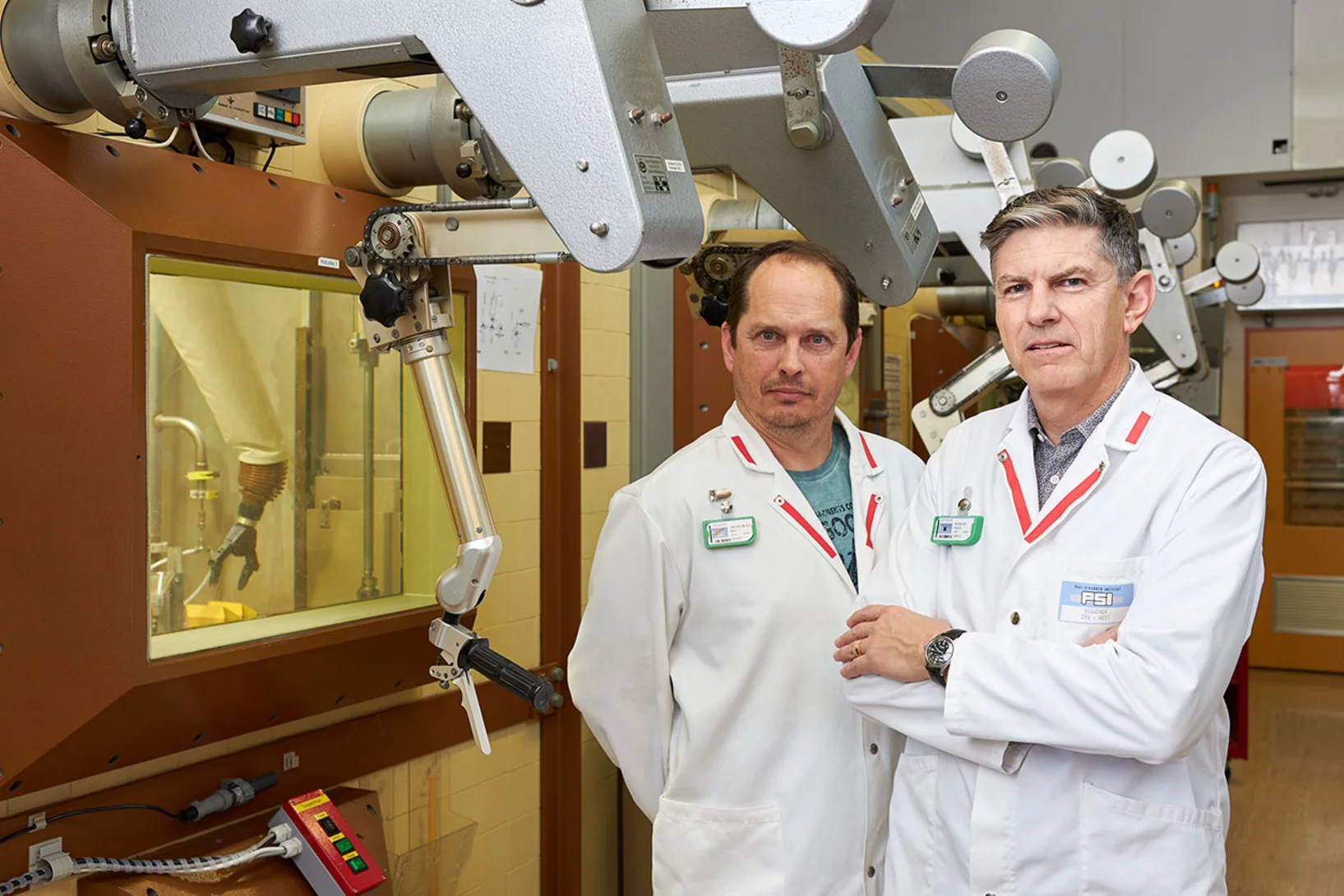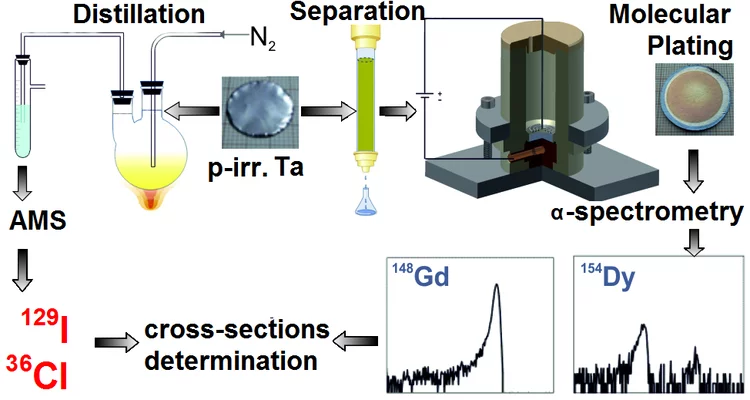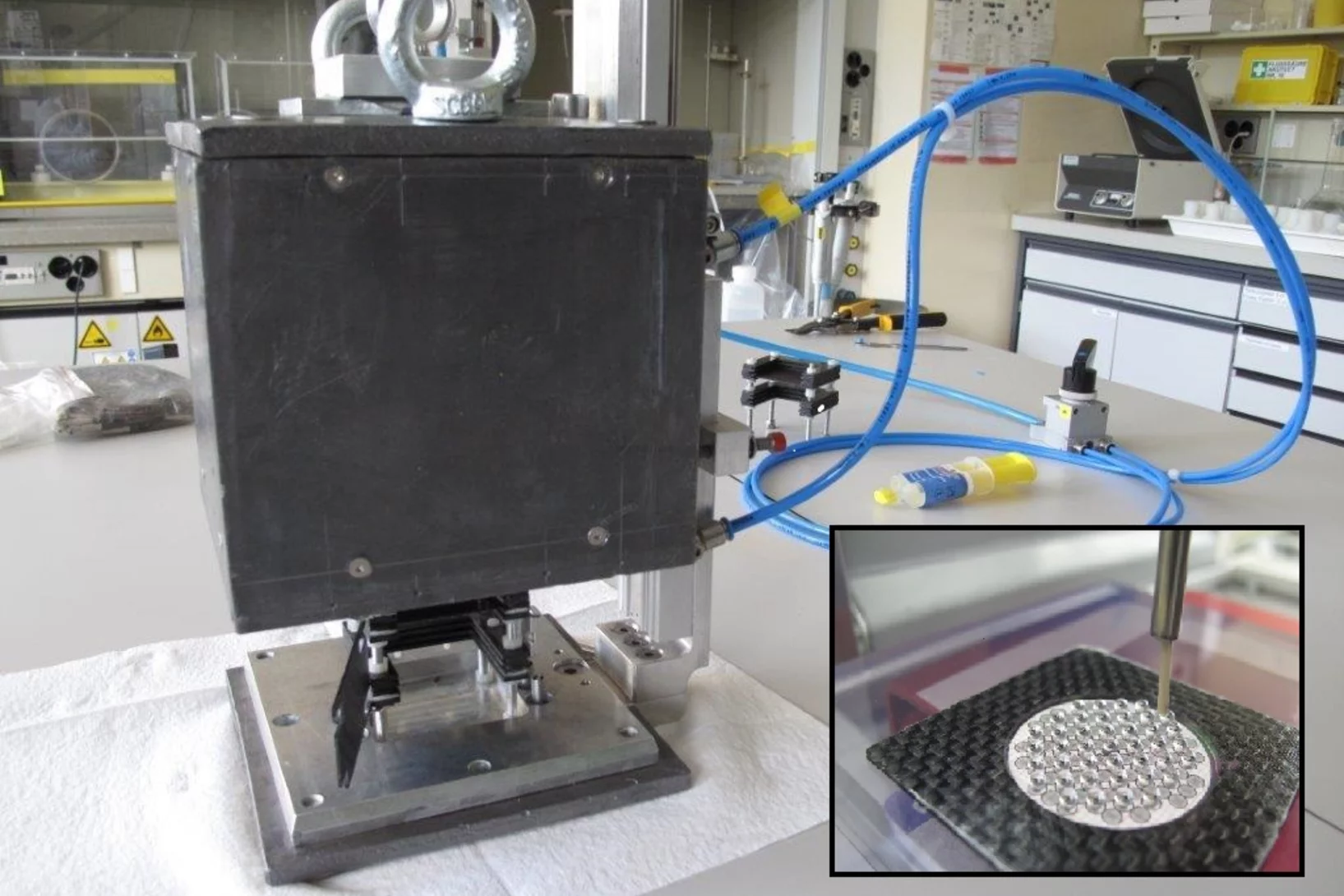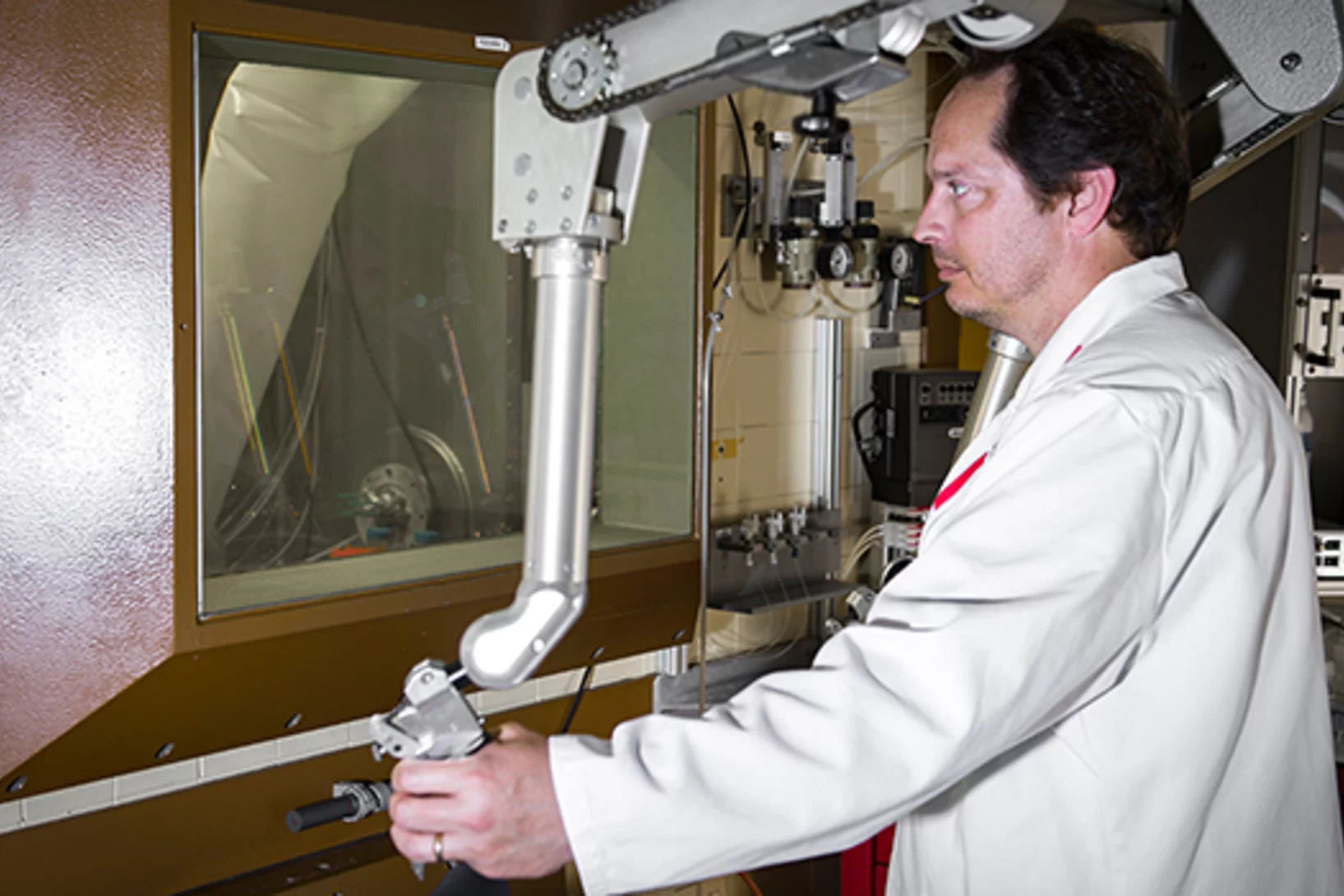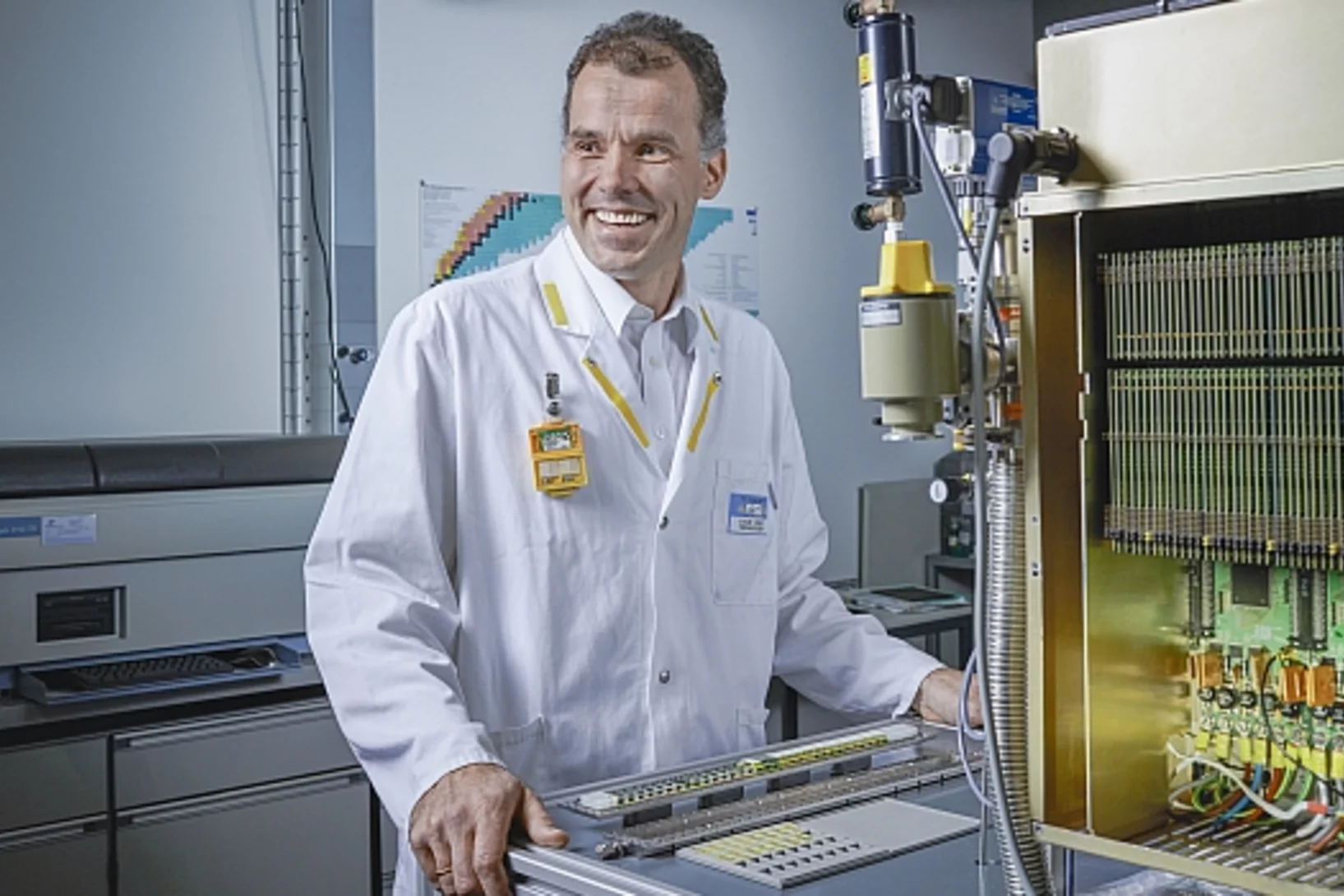Un élément «magique» remet en question le modèle de la synthèse nucléaire dans les étoiles
Des mesures surprenantes mènent sur la piste d’un processus inconnu.
Précision unique: nouvelle valeur pour la demi-vie du samarium-146
Des scientifiques du PSI et de l’Université nationale australienne ont déterminé la demi-vie du samarium 146 avec une très grande précision.
Terbium-161: new radionuclide therapy hits the clinic
Highly targeted cancer treatment has the potential to eliminate ultra-small cancer lesions that cause disease recurrence.
LRC and BluAct explore innovative filter material
Fission products from the PSI-SINQ gas-jet facility, as operated by LRC, were used to reveal the separation of relevant radionuclides from radioactively contaminated water. The tests were conducted using a novel innovative filter material made of a blend of milk whey and active charcoal on cellulose. This material has been developed by the ETHZ spin-off BluAct Technologies GmbH.
The importance of this project was recently highlithed in ETSON/news
Weissbuch Radiochemie Schweiz
In December 2020, the Swiss Academy of Sciences (SCNAT) published its white book on radiochemical education in Switzerland. The report was authored under the lead of Prof. Dr. Roger Alberto (University of Zurich), Dr. Mario Burgener (Spiez Laboratory), and Prof. em. Dr. Heinz W. Gäggeler (University of Bern/Paul Scherrer Institute) and comprises contributions from many experts on the topic from various institutions throughout Switzerland. The white book highlights the imminent loss of experts in the field of radiochemistry and provides solutions to counteract this development.
Radiochemistry at ETH Zurich
As of December 10, 2020, the ETH Zurich appointed PSI’s Prof. Dr. Patrick Steinegger as assistant professor of radiochemistry (tenure track). Thus, the ETH domain took first counter measures against the imminent loss of radiochemical expertise in Switzerland, emphasized in the “Weissbuch Radiochemie Schweiz” by the Swiss Academy of Sciences (SCNAT). Furthermore, the December issue of CHIMIA (Swiss Chemical Society) invited to present the diverse radiochemical activities throughout the country.
CHIMIA: Radiochemistry in Switzerland
The December issue of CHIMIA of the Swiss Chemical Society (SCS) focused on the radiochemical activities throughout Switzerland. Scientists of the Laboratory of Radiochemistry contributed with a number of articles ranging from topics of fundamental sciences to applied research, thereby reflecting on the diverse projects carried out in our laboratory.
Young Scientist Prize 2020 of the Swiss Neutron Science Society
The Swiss Neutron Science Society as one of the representatives of the neutron scatterers in Switzerland honors each year young scientist in recognition of a notable scientific achievement in the form of a PhD thesis or to a nominee with an exceptional track record in neutron science.
In 2020 one of the prizes sponsored by SwissNeutronics was awarded to Jiri Ulrich (LRC/PSI) for his doctoral thesis on “High precision nuclear data of Mn-53 for astrophysics and geosciences”.
Un médicament anticancéreux issu de la source de neutrons du PSI
A la source de neutrons SINQ, des chercheurs du PSI produisent des radionucléides qui contribuent au développement de nouveaux traitements anticancéreux efficaces et ciblés. Ils collaborent étroitement avec les hôpitaux des environs.
Un matériau produit au PSI permet de mettre à l'épreuve certaines irrégularités de la théorie du Big Bang
Le Big Bang a été immédiatement suivi de l'apparition d'atomes de type béryllium 7. Dans tout l'univers, la plupart de ces atomes se sont désintégrés depuis belle lurette. Un échantillon de béryllium 7, produit artificiellement au PSI, vient d'aider les chercheurs à mieux comprendre les premières minutes de l'univers.
Nuclear data for nuclear installations: Radiochemistry improves the precision of the cross-section data of long-lived radionuclides
Knowledge about the cross sections data of the target materials used for spallation neutron facilities (SNF) and accelerator driven systems (ADS) is essential for the licensing, safe operation and decommissioning of these facilities. In addition, these data are important to evaluate and improve the existing computer simulation codes. Especially the α-emitter 148Gd has a large contribution to radio-toxicity of spallation target facilities with its 74.6 years of half-life.
Radioactive targets produced at PSI enable improving the Big Bang Theory
One of the long-lasting unsolved problems in Nuclear Astrophysics is the so-called "Cosmological Li Problem", i.e. the large discrepancy between the primordial 7Li abundance predicted by models of Big Bang Nucleosynthesis and the one inferred from astronomical observation. The study of the production/destruction rates of the radioactive precursor 7Be is one of the clues for solving this problem.
Nucléide spécialement conçu pour des applications médicales
Des chercheurs au PSI ont réussi pour la première fois à produire dans un cyclotron un radionucléide appelé scandium 44 en quantité et en concentration suffisantes. Ils ont ainsi créé les premières conditions pour une utilisation ultérieure du scandium 44 dans le cadre d’investigations médicales dans les cliniques.
Un atome à la fois
Le groupe de recherche Eléments superlourds étudie au PSI les atomes instables et exotiques, situés à la fin du tableau périodique des éléments. Leur rêve: découvrir un jour sur la carte des chimistes un îlot de stabilité, qui pourrait exister au-delà des éléments connus à ce jour.
